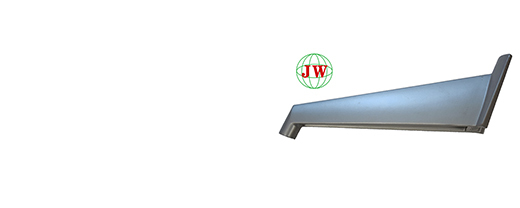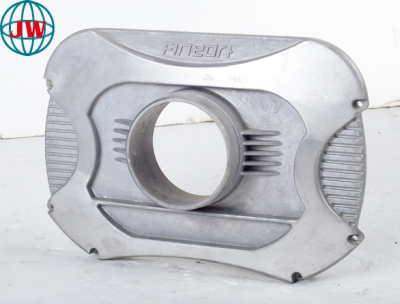
Radiating Innovation: The Dominance of Die Casting in Lighting Fixture Manufacturing
2025-05-22 15:30
In an era where lighting transcends utility to become a fusion of art, technology, and sustainability, die casting has emerged as the cornerstone of modern lighting production. From sleek commercial LED systems to intricate residential chandeliers, die-cast components are reshaping the industry by delivering unmatched precision, durability, and design versatility. This article explores how die castingis illuminating new possibilities in materials, efficiency, and eco-conscious manufacturing for lighting solutions worldwide.
The Technical Brilliance of Die Cast Lighting Components
Die casting is a high-pressure manufacturing process that injects molten aluminum, zinc, or magnesium alloys into custom molds, creating components with micron-level accuracy. For lighting, this means producing complex structures like heat sinks, lamp housings, and decorative elements that traditional methods cannot replicate. The process’s ability to maintain tight tolerances ensures seamless integration of electrical components, while its scalability supports mass production without compromising quality.
Material Dynamics in Lighting Applications
Aluminum Alloys: The go-to material for functional components, aluminum’s lightweight strength and thermal conductivity make it ideal for LED heat sinks. These critical parts dissipate heat efficiently, extending bulb lifespan by up to 50% in high-use environments. Aluminum’s corrosion resistance also makes it suitable for outdoor fixtures, enduring harsh weather for decades.
Zinc Alloys: Praised for their ability to capture intricate details, zinc die castings excel in decorative roles. From ornate lamp bases to minimalist cabinet handles, zinc allows designers to craft textures and finishes that mimic hand-forged artistry, elevating residential and hospitality lighting aesthetics.
Magnesium Alloys: Though niche, magnesium’s ultra-lightweight properties (33% lighter than aluminum) drive innovation in portable and aerospace-inspired lighting. Its high strength-to-weight ratio is crucial for components in drones, camping lights, and aircraft cabin fixtures.
Design Evolution Driven by Die Casting
Die casting has unlocked a new era of creativity in lighting design, merging form and function seamlessly:
Smart Integration of LED Technology
As LED lighting dominates, die casting plays a pivotal role in compact, high-performance designs. Integrated heat sinks within lamp housings eliminate separate components, reducing assembly time and enhancing thermal efficiency. For example, recessed ceiling lights with die-cast aluminum bodies now achieve 30% better heat dissipation than traditional designs, ensuring consistent brightness and energy savings.
Customization at Industrial Scale
Modular Systems: Die-cast connectors enable adjustable fixtures like height-variable desk lamps or expandable chandeliers. These modular designs cater to evolving consumer needs, from home offices to dynamic retail spaces.
Artistic Freedom: Zinc die castings allow for intricate patterns, such as filigree motifs on pendant lights or retro-inspired grilles on wall sconces. Manufacturers can now replicate bespoke designs in bulk, making luxury aesthetics accessible to mass markets.
Sustainability as a Core Principle
The lighting industry’s shift toward eco-friendliness finds strong support in die casting:
Circular Material Use: Aluminum and zinc are 100% recyclable, with scrap metal from production reused in new molds. This reduces reliance on virgin materials by up to 70%, cutting carbon footprints.
Energy-Efficient Production: Modern die casting machines, equipped with Industry 4.0 sensors, optimize energy use by 25–30%. AI-driven systems monitor temperature and pressure in real time, minimizing waste and downtime.
Long-Life Products: Die-cast components resist wear and tear, reducing replacement frequency. A study shows outdoor aluminum fixtures last 20+ years, compared to 5–8 years for plastic alternatives.
Industry Applications: Illuminating Diverse Sectors
Residential Lighting: Balancing Comfort and Style
In homes, die-cast components enhance daily living. Aluminum die-cast ceiling fan housings operate quietly while supporting heavy blades, while zinc cabinet lights with intricate bezels add warmth to kitchens. Smart home systems also rely on die casting for compact, heat-resistant enclosures for Wi-Fi-enabled bulbs and sensors.
Commercial and Urban Infrastructure
Smart Street Lighting: Cities like Singapore and Dubai use aluminum die-cast street lamps integrated with solar panels and IoT sensors. These fixtures adjust brightness based on traffic, reducing energy use by 40% while improving safety.
Hospitality and Retail: High-end hotels employ zinc die-cast chandeliers with gold-plated finishes to create opulent lobbies, while retail stores use minimalist aluminum track lighting to highlight merchandise with precision.
Industrial and Automotive Sectors
Heavy-Duty Lighting: Factories rely on magnesium die-cast floodlights for high-lumen output in low-weight designs, simplifying installation in ceilings up to 30 meters high.
Automotive Lighting: Die-cast aluminum is critical for car headlights, forming heat sinks that maintain LED performance at speeds exceeding 200 km/h. Its aerodynamic shaping also reduces drag, improving fuel efficiency.
Challenges and Cutting-Edge Solutions
Despite its advantages, die casting faces hurdles like rising alloy costs and demand for faster prototyping. Innovations addressing these include:
Vacuum Die Casting: This technique evacuates air from molds, reducing porosity in components by 90%. It’s ideal for high-stress parts like industrial floodlight bases.
3D-Printed Mold Prototyping: Companies now use 3D-printed sand molds to test designs in days, cutting traditional lead times from weeks to hours. This speeds up custom projects, such as museum-specific lighting installations.
Hybrid Material Development: Researchers are combining aluminum with silicon carbide to create composites that boost thermal conductivity by 50%, promising smaller, more efficient heat sinks for next-gen LED arrays.
The Future of Die Cast Lighting: Bright and Bold
As the industry embraces smart, sustainable solutions, die casting will remain indispensable. Trends like adaptive lighting (adjusting color temperature via AI) and biophilic design (imitating natural light patterns) will rely on die casting for precise, scalable components. Meanwhile, advancements in nanotechnology may lead to self-cooling alloys, further reducing energy needs.
In conclusion, die casting is the silent architect behind the world’s most iconic lighting designs. From the subtle glow of a bedside lamp to the towering illuminations of urban skylines, die-cast components blend engineering excellence with artistic vision. As technology and sustainability converge, this manufacturing marvel will continue to light the way—proving that innovation, like light itself, knows no bounds
Get the latest price? We'll respond as soon as possible(within 12 hours)












